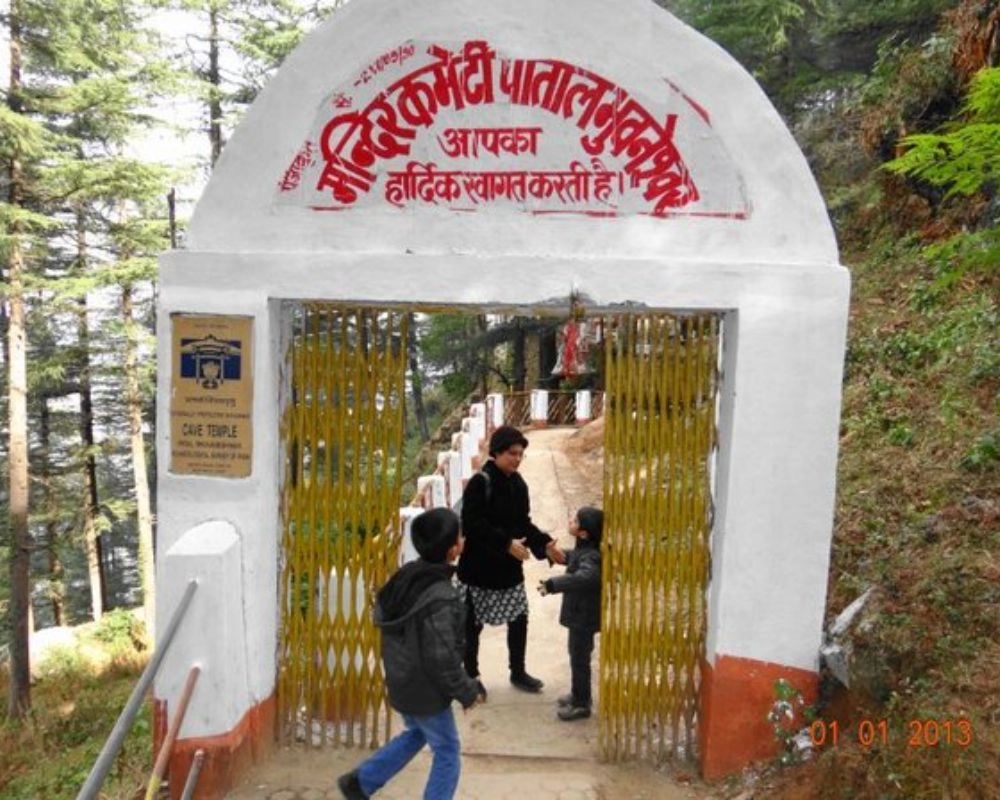Baijnath Temple, Bageshwar
Nestled in the serene Kumaon region of Uttarakhand, along the banks of the Gomati River, the Baijnat...

Tucked away in the misty mountains of Uttarakhand’s Pithoragarh district, lies a sacred and mystical cave temple that has mesmerized pilgrims, adventurers, and sages for centuries — the Patal Bhuvaneshwar Cave Temple. Described in ancient texts and spoken of in hushed reverence, this underground temple is believed to be a gateway to the divine realm, where gods, goddesses, and mythologies come alive in stone and silence.
According to the Skanda Purana, Lord Shiva revealed this cave to King Rituparna of the Sun Dynasty (Suryavansha) during the Treta Yuga. It is believed that inside this cave lies the presence of:
33 crore Hindu deities,
Lord Ganesha’s severed head,
Lord Sheshnag, who supports the Earth,
and even symbols of the four Yugas (ages of time).
It is said that visiting this cave is equivalent to worshipping all the pilgrimage sites (Char Dhams).
The entrance to Patal Bhuvaneshwar is a narrow opening in a hillside, just large enough for a person to descend with the help of iron chains and steps carved into the limestone. As you move 90 feet below the earth’s surface, a breathtaking world of naturally formed sculptures and shrines opens up before your eyes.
Inside the cave, you’ll witness:
Stalactite and stalagmite formations resembling deities and divine symbols,
A natural Shiva Linga, constantly dripping with water — believed to be from unseen spiritual rivers,
Formations resembling Kal Bhairav, Adi Shankaracharya, and even the path to Patal Lok (the underworld).
Lord Shiva is the central deity of the cave temple, with several chambers inside believed to be his meditative abode.
Adi Shankaracharya rediscovered the cave in 1191 AD, and since then it has become a vital pilgrimage site.
The cave is still said to expand spiritually — many believe that the full depth of the cave has never been explored.
Location: Near Gangolihat in Pithoragarh District, Uttarakhand
Altitude: ~1,350 meters above sea level
Surroundings: Dense oak and cedar forests, panoramic views of the Himalayas, and a serene, untouched atmosphere
The temple is around:
14 km from Gangolihat
91 km from Pithoragarh
170 km from Almora
Nearest Airport: Pantnagar (240 km)
Nearest Railway Station: Kathgodam (200 km)
By Road: Accessible via Almora → Gangolihat → Patal Bhuvaneshwar
The last stretch involves a short hike down to the cave entrance. Forest permissions and a guide are typically required for entry.
Photography is not allowed inside the cave — carry memories, not pictures.
The descent is steep and narrow — not recommended for people with claustrophobia or mobility issues.
Wear grip-friendly shoes and carry a flashlight, though the cave has some lighting inside.
Avoid visiting during the monsoon due to slippery paths.
Visiting the Patal Bhuvaneshwar Cave Temple is not just a pilgrimage — it’s an inner journey into the divine. It merges myth, faith, geology, and awe into one unforgettable experience. As you emerge from the dark, sacred cavern into the sunlight, you don’t just come out of a cave — you come out transformed.
Nestled in the serene Kumaon region of Uttarakhand, along the banks of the Gomati River, the Baijnat...
In the pristine Kumaon region of Uttarakhand, where the air is thick with pine scent and devotion, l...
Tucked deep within the lush deodar forests of Almora district, Uttarakhand, lies one of the most mys...
High above the scenic town of Almora in Uttarakhand, nestled amidst pine-covered hills and kissed by...
